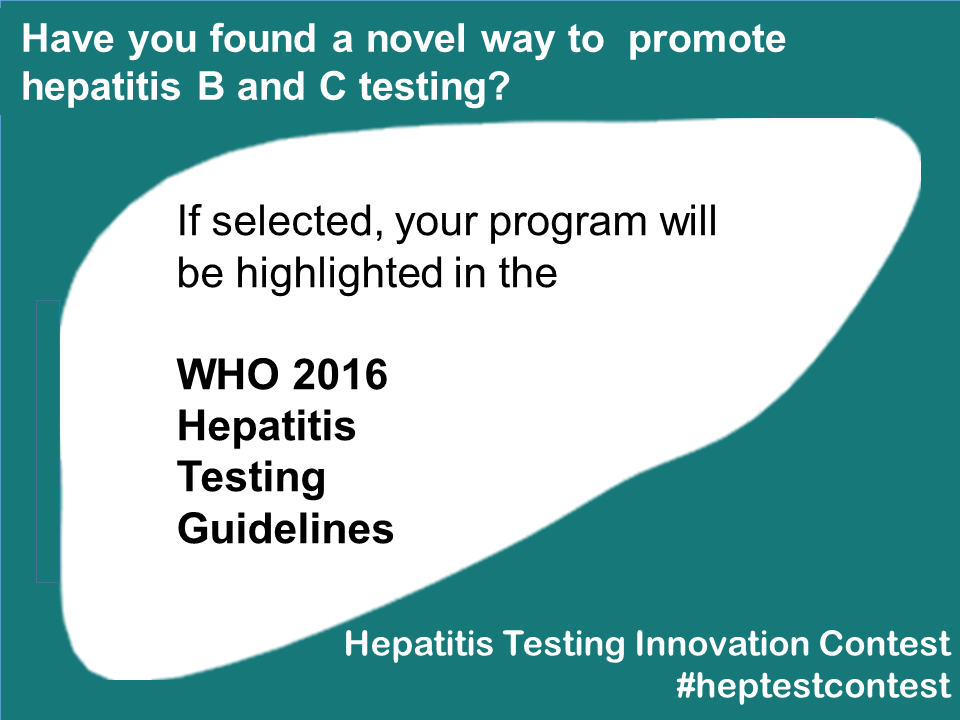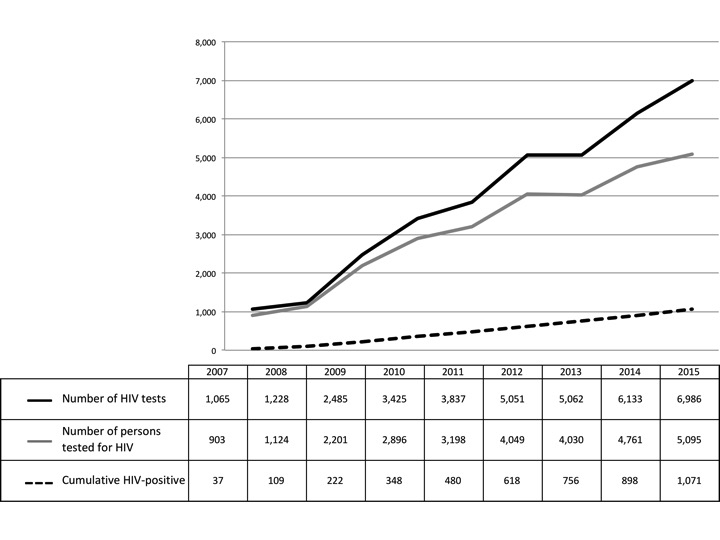
The Hepatitis Testing Innovation Contest, which is accepting submissions until 1 March 2016, feels like a welcome breath of fresh air. Social Entrepreneurship for Sexual Health (SESH) organized the contest in collaboration with the World Health Organization’s Global Hepatitis Programme to highlight novel ways that service providers have found to increase hepatitis B virus (HBV) and hepatitis C virus (HCV) testing.
Winning entries will be included in the forthcoming WHO hepatitis testing guidelines. This is a terrific way, in my opinion, to tackle the problem of undiagnosed HBV and HCV – one of the greatest obstacles to reducing liver-related illness and death worldwide.
News of the contest got my creative juices flowing. As I walked over to the University of Barcelona last week, I found myself wondering if some future testing initiative might build on the example of BCN Checkpoint, a programme that is well known in Barcelona’s communities of men who have sex with men.
I was recalling what Ferran Pujol, the director of BCN Checkpoint, once told me about how his community-based programme had stumbled upon a strategy that helped to almost triple the number of HIV tests administered.
What if the testing counselor is a celebrity?

Requests for BCN Checkpoint’s services soared in 2009 – the same year that one of the organization’s staff testing counselors, Sergio Lara, was crowned Mr. Gay Europe! BCN Checkpoint went from administering 1,228 HIV tests in 2008 to 2,485 in 2009, and 3,425 in 2010.
That made me wonder about the concept of a ‘celebrity’ testing counselor – might it perhaps be a replicable model?
I floated the idea to Ferran, who continues to oversee BCN Checkpoint. He immediately noted that the programme’s ongoing popularity – almost 7,000 HIV tests administered in 2015 – is not being driven by a 2009 beauty pageant.
“BCN Checkpoint is known for the low barrier to get tested, peers who are able to talk about sexuality, no judgments on how many times you want to get tested, and the increased number of services and technology,” he said.
The take-away lesson?
Achieving sustained population-level viral hep testing increases will require more than clever concepts. I anticipate that testing interventions that make an impact in the coming years will provide models of innovation and also be built on the same tried-and-true principles that Ferran identified.
In other words, the way forward is to innovate and integrate the best of what we’ve learned about people-centred public health.

For information about how to enter SESH’s Hepatitis Testing Innovation Contest, go to https://www.seshglobal.org/heptestcontest/. The contest deadline is 1 March 2016.
Hepatology, Medicine and Policy is now accepting submissions. For more information, visit: www.hmap.biomedcentral.com.
2 Comments